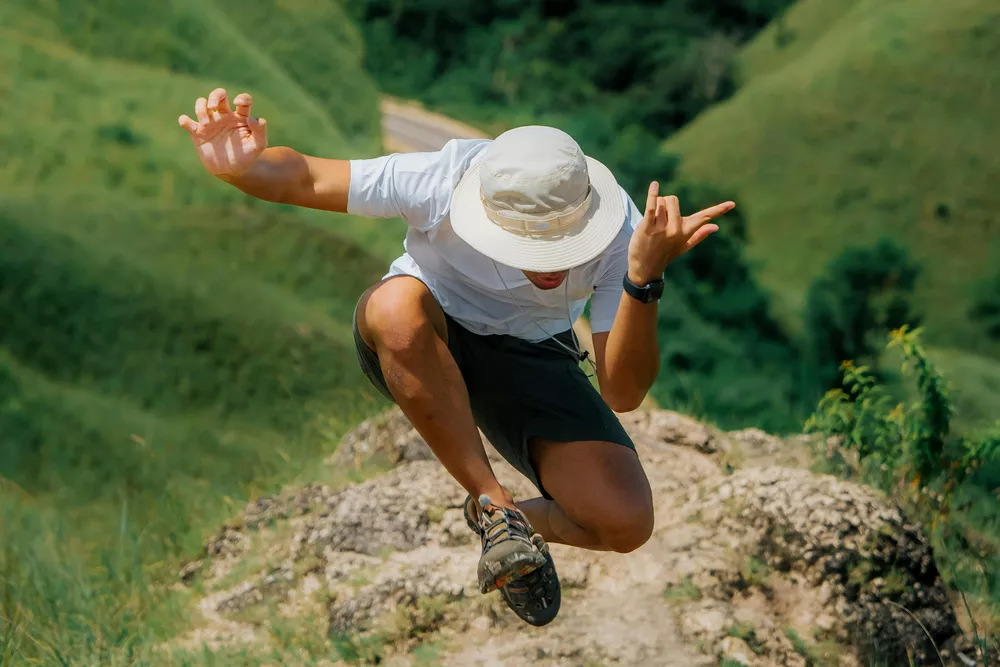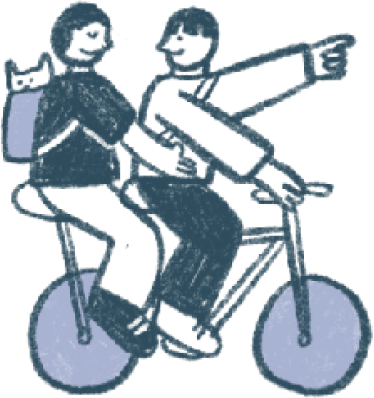Sumba: Everything You Need to Plan a Trip [2025]
Everything you need to know to plan your trip, including whether the toilets are clean!
![Sumba: Everything You Need to Plan a Trip [2025]](https://d18sx48tl6nre5.cloudfront.net/webp_xl_8324c6accfb5766831cc429fb0199a73.webp)
We were first drawn to the island of Sumba, Indonesia for its wild horses, rolling emerald hills, turquoise lagoons, and epic Icelandic landscapes that look straight out of a Wes Anderson film.
It's become one of our favourite places in Indonesia and one of the rare hidden gems left that haven't been overrun by tourists. In fact, it's so remote and unknown that we practically had the whole island to ourselves. Discovering Sumba felt like stepping back in time – life here is simpler and time moves slower; a world away from the usual tourist chaos.
Here's everything you need to know to plan your ultimate Sumba trip (down to whether the toilets are clean!)
The Basics
How to get to Sumba
The easiest way to reach Sumba is to take a flight from Bali. There are multiple flights a day from Bali (DPS) to Sumba's two airports: Tambolaka Airport (TMC) in Southwest Sumba and Waingapu Airport (WGP) in East Sumba.
Pro Tip: Flight schedules can be subject to change. If flights aren't full (which can happen), your flight may be moved to a later time (e.g., from morning to afternoon or vice versa).
Best Way to Explore Sumba
Sumba is about 2.5 times the size of Bali and 20 times the size of Singapore! Most people visit West Sumba because that's where most of the iconic spots and luxurious eco resorts are. The spots in the West are also closer together, so travelling from one place to another doesn't take as much time as in the East where they are spread further apart.
However, the East has gorgeous nature too like the beautiful limestone hills that Sumba is known for, and more authentic local villages, which we preferred. We highly recommend starting your road trip journey in the East and moving West to end your journey in comfort.
The only way to explore Sumba is to hire a local guide. Google Maps is not accessible in more remote parts of the island. Road conditions also make it impossible to get around by yourself. Getting a local guide and driver will help you navigate through the rocky roads, your guide will help you translate, and explain the deeper traditional customs of what the Sumbanese people believe in.
Best Time To Go
Pasola Festival: Usually happens in Feb-March. But don't plan your trip around this because the dates for the festival are normally determined 1-2 weeks ahead of time based on when the Nyale worm appear on the shores of West Sumba. If you're already in Bali in February and can hop on a flight at the last minute, you can try to catch the festival but don't plan your trip around it!
Seasons and Scenery: Rainy season (Nov-Mar) brings lush greenery, dry season (May-Sep) transforms the landscape into a golden savannah.
Avoid Rainy Season (Nov to Mar): Unless you absolutely have to, avoid it even though it brings lush greenery. So much of Sumba is outdoor exploration, and there's little else to do if it rains! Because road conditions are not the best, a rainy day would mean that you might not be able to visit some of the iconic spots. Plus, the waterfalls turn brown because of rainfall and mud.
Sumba Itinerary
One Week in Sumba
To explore the best of Sumba, we recommend 7 days (including flying time). This lets you see everything in Sumba but is pretty back-to-back with long drive times. If you want more time to chill and relax in the fancy resorts in the West, you should add additional days!
Day 1: Flight from Bali to Waingapu, East Sumba – Rende Village
Day 2: Palindi Piarakuku Hills – Waimarang Waterfall – Walakiri Beach
Day 3: Tanggedu Waterfall – Wairinding Hills
Day 4: Lapopu Waterfall – Prai Ijing Village
Day 5: Weekuri Lagoon – Ratenggaro Village – Mandorak Beach
Day 6: Wee Kacura Rice Paddy/Waterfall – resort of your choice
Day 7: Flight back to Bali from Tambaloka, West Sumba
East Sumba: Things to Do
Palindi Piarakuku Hills
Sumba’s most iconic view – endless rolling limestone hills as far as your eyes can see. Known for its many hills, this lesser-known hill is one of our favourites because we were the only ones there!
The hills transform with the seasons. A gorgeous green during the rainy season (Nov-Mar), they turn a beautiful golden brown during the dry season (May-Sep). While the dry season is recommended, we were lucky to experience a clear, sunny day even though we visited during rainy season.
Wairinding Hills
Wairinding is Sumba's most famous hill, and a stunning sunset spot. The vast landscapes were absolutely beautiful and watching the sunset against the gorgeous green hills was such a treat. Because its a popular spot, we saw a number of locals enjoying the evening and taking photos as well. Still, we wouldn't consider it crowded because Sumba is generally still considered remote.
Waimarang Waterfall
Take a dip into this secluded turquoise waterfall which felt like a private swimming pool in nature. The trek to Waimarang Waterfall takes around 20 minutes one way, and was manageable. You might spot Papa Eric taking care of the waterfall; arranging rocks to ensure a safe pathway for visitors.
Tanggedu Waterfall
Nicknamed the Grand Canyon of Sumba, its dramatic canyon-like cliffs and epic waterfalls were definitely something else. To get to Tanggedu Waterfall, you can opt to take a motorbike for a small fee that a short 5min ride, or choose to walk about 15-20mins, before reaching the beginning steps of the waterfall. We recommend taking the bike as its easier and faster, versus walking under the hot sun.
If you're bringing a drone, avoid flying it at Tanggedu Waterfall because the signal is weak. One of us lost a drone at this exact spot (rip).
Dancing Trees at Walakiri Beach
The beautiful mangrove trees appear to "dance" against the sunset. Always check tide charts for the best "dancing mangroves" experience! Our guide knew a secret and less crowded spot to see the dancing trees, but unfortunately it was high tide when we went, so we couldn't see anything.
West Sumba: Things to Do
Weekuri Lagoon
Weekuri lagoon is one of our favourite spots in Sumba. The waters are incredibly clear and blue, and it felt amazing to have the place to ourselves. There's also a boardwalk around the lagoon where you can get a birds eye view of the lagoon and see where it meets the sea.
We met a fishermen selling live lobsters (we were told that we could have lobster sashimi but decided not to). To cap off the perfect afternoon, we highly recommend getting a fresh coconut from a nearby stall – seriously the best ever after all that swimming!
Tips:
- Be careful because the corals are super sharp and can give you a nasty cut
- The local kids will offer to take some pictures of you. A friendly "no thanks" is fine, but if you do take them up on their offer, consider a small tip
- You can rinse off the saltwater with a basic shower for a small fee
Ratenggaro Village
This is Sumba's most visually iconic village because it has the highest thatched-roof villages on the island (with some being more than 20m tall) and is located along a beach.
Almost everyone visits this village, so that's why the locals are more used seeing travellers in West Sumba, and can get a little pushy with asking for money. Please do not give any money. If you'd like to support them, do consider buying a few local handmade souvenirs instead.
Prai Ijing Village
Walking through Prai Ijing Village felt like stepping back in time. While less visually striking than Ratenggaro Village, we felt more connected to the locals here. We had a more authentic experience here, without the locals asking us for money. In fact, one of them even invited us into their homes so we could see firsthand how they built their houses and live, which was really special for us.
Tip: When visiting any local village in Sumba, opt for modest tops that covers your chest and shoulders and bottoms that go past the knee.
Lapopu Waterfall
Lapopu is hands down the most epic waterfall in Sumba because its a multitiered waterfall of 90m in height! This was the easiest waterfall to get to, with just a short 5min walk from the carpark.
The waters were brown when we went during the rainy season and the current was rather strong, so we couldn't go close to it. We recommend going during the dry season so that you can really experience the full awesomeness of Lapopu Waterfall.
Mandorak Beach
One of many beautiful and pristine beaches in Sumba, Mandorak beach is known for this iconic view. If you go at sunset during June-July, you'll see the sun set directly in the middle of the two cliffs that frame the beach.
Sumba's Ancient Culture and Traditions
Marapu Beliefs
The island of Sumba goes beyond breathtaking landscapes. One of the most distinct things about Sumba is how rooted it is in its ancient traditions and beliefs.
As you visit the different local villages on the island and hear stories from your guide, you'll learn more about how different and unique life is here, and how Marapu (Sumba's ancestral and animist religion) is woven into their daily lives.
Pasola Festival
Sumba is one of the few countries that still practice the ancient art of jousting (even the police don't get involved if someone gets hurt!) It's more than just a competition; it's an annual ritual to bless the land, celebrate the rice-planting season and ensure a bountiful harvest. Traditionally, it's believed that spilled blood during Pasola will appease the spirits.
Ikat Textiles
Sumba is known for it’s ikat, a type of Indonesian hand-woven textile with geometric patterns of animals like horses, shrimp, turtles, roosters etc. on hand-dyed fabric using indigo leaves. Each piece of ikat can take months to weave, and is deeply rooted in the Sumbanese local culture.
We were each given a piece of ikat by our guide on our first day which we really appreciated! If you’re a textile lover, definitely bring some cash and consider buying to support the locals.
Where to Stay in Sumba
East Sumba
The accommodation here is simpler and more budget-friendly. We recommend Padadita Beach Hotel or Kambaniru Beach Resort. They are both pretty clean and comfortable, are $35-45 USD/night.
West Sumba
Split your stay for optimal exploration.
In Tambolaka City: As you move from East to West, consider staying in the West Sumba regency since it would be nearer to the day 4 spots in the itinerary above. We highly recommend Sima Hotel - it's the newest hotel in Sumba and also the tallest building on the whole island at $45-55 USD/night.
Southwest Resorts: Most travellers visiting West Sumba will spend a night or two at one of the many beautiful eco resorts that line the coast. Choose from budget-friendly options (Rua Beach Resort, Bobocabin) to luxurious escapes (Alamayah, The Sanubari, Lelewatu - $250-$400 USD/night). For ultimate luxury, there's the iconic Nihi Sumba which was awarded the world’s 50 best hotels in 2023. One night at Nihi Sumba can cost you upwards of $1000 USD!
Check out our full itinerary inclusive of accommodation here!
FAQs
How to get around?
You have to explore Sumba with a driver-guide. Sumba is one of Indonesia’s most remote islands, so most of the roads are not on Google maps and there’s no service at certain locations. A great guide who is fluent English, has in-depth cultural knowledge, and flexibility, is super important in a fascinating place like Sumba so that you get the best experience and can understand and connect with it beyond just taking nice pictures.
Do I need to be fit to go?
You don't need to be fit to get the best out of your Sumba trip! You'll be spending more time in the car travelling from one place to another and admiring the amazing views.
The longest waterfall hike (Tanggedu) is 30mins one way if you choose to walk instead of taking the motorbike, and the inclines were manageable. Be sure to take breaks if needed.
Who is it suitable for?
Sumba is a road trip destination, so choose your travel companions wisely! It's perfect for a group of 2 to 4 for comfort (as you can share a car together). It's fine for kids, but the drive times can be very long (up to 6 hours) if you want to see it all, so you'll need to be fine with long car journeys.
Is Sumba suitable for kids?
Sumba is better suited for kids 8+ because some hikes and bridges might be unsafe especially during the rainy season. That being said, it is still possible for young kids to go, as long as you take extra caution and go slow. Sumba is definitely not suited for older folks with limited mobility/conditions.
Are there toilets on the way? Are they clean?
You'll find toilets at most beaches, waterfalls, Wee Kacura, Weekuri Lagoon. There's a basic shower at the lagoon for rinsing off (think just a pipe with running water).
Toilets vary in cleanliness and often lack lighting. While tolerable, don't expect pristine standards.
Be aware that there are no toilets at the villages. Plan restroom stops at places mentioned above before longer journeys or village visits.
What to do when locals ask for money?
Local interactions can be endearing, but be aware that you might encounter persistent requests for money at the villages, especially in the West where it's more touristed. The local kids will also offer to take some pictures of you at some spots (e.g. Weekuri Lagoon). A friendly "no thanks" is fine, but if you do take them up on their offer, consider a small tip.
Are flights from Sumba reliable?
If you're flying out of Sumba via Bali, try not to book back-to-back connecting flights! Flights from Sumba are notoriously unreliable as there are times when there's not enough passengers to fill a flight (especially during the rainy season). If you're taking a connecting flight from Bali back home budget plenty of time ahead of your connection in case your Sumba-Bali flight gets rescheduled.
What To Pack?
Medicine
Pack your essentials (panadol, anti-diarrhea pills, mosquito repellant etc.) as pharmacies are not accessible in remote areas.
Be prepared for extremely windy roads (especially in the East) so definitely bring some motion sickness pills!
Sun Protection
The Sumba sun is no joke so essentials like sunscreen, umbrella, hat, and a portable fan are lifesavers!
Getting sunkissed is great, but not sunburnt, so be sure to double up on sunscreen and reapply frequently, especially if you're going into waterfalls or lagoons.
Footwear
Hiking shoes are not necessary for this trip. Instead, we recommend investing in a good pair of outdoor sandals that have a good grip. Bonus if they can dry easily since you'll be in and out of the water.
Cameras and Drones
Bring a camera or a drone – the views are stunning! But please ask your guide about safe drone flying spots. Avoid areas like Tanggedu Waterfall where the signal is weak.
Planning a Trip
How to Plan a Trip
There are two main ways to explore Sumba. If you already have your accommodations booked and just need a car and driver, you can book a custom private tour for any number of days. Your guide will help you create a personalized itinerary based on your interests.
Alternatively, if you prefer to see all the must-visit highlights of Sumba, you can book our one-week private road trip. This trip can either include accommodation, transportation, and a guide, or just transportation and a guide if you prefer to choose your own accommodations. The one-week road trip is completely customizable, so just let us know your preferences, and we'll tailor the itinerary to you!







































